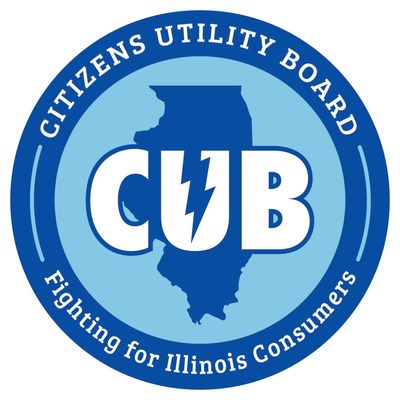CUB REVIEW OF STATE DATA FINDS COM ED, AMEREN RESIDENTIAL CUSTOMERS HAVE LOST +$2 BILLION TO ALTERNATIVE ELECTRICITY SUPPLIERS OVER LAST DECADE
CHICAGO, Aug. 21, 2025 /PRNewswire/ — Commonwealth Edison and Ameren Illinois residential customers have lost a combined total of more than $258 million over the last year and more than $2 billion since 2015 to alternative electricity suppliers, the Citizens Utility Board (CUB) said Thursday, citing annual state reports.
The watchdog called for state passage of additional consumer protections and warned residential consumers across Illinois to beware of rip-offs peddled by alternative suppliers door-to-door, via mail and over the phone.
“The numbers show that going with an alternative supplier can be a risky, financially painful gamble,” CUB Executive Director Sarah Moskowitz said. “This is a buyer-beware market. There are more reliable ways to save money, including energy efficiency.”
While ComEd and Ameren bill customers for delivering electricity over the power lines they own, under Illinois law those customers can choose another company—an alternative supplier—to supply the actual electricity. The Illinois Commerce Commission’s Office of Retail Market Development (ORMD) recently released its 2025 annual report, covering June 1, 2024 through May 31, 2025. Some findings:
- As of May 2025, about 1.18 million Illinois households were with an alternative supplier—about a 14 percent decrease from the year before. About 20 percent of ComEd residential customers and about 43 percent of Ameren customers were with an alternative supplier.
- ComEd customers who were with an alternative supplier on average paid about 2.74¢ per kilowatt-hour (kWh) more, compared with ComEd’s supply price. Ameren customers who were with an alternative supplier on average paid about 1.78¢ per kWh more, compared with Ameren’s supply rate.
- The highest alternative supplier rates the ICC found were a 39¢ per kWh variable rate (a rate that can change monthly) in ComEd territory, and a 29¢ per kWh variable rate in Ameren territory. Both prices were about four to six times the utility supply prices at the time.
- In the early days of competition—2011 to 2014—Illinoisans often saved money with alternative suppliers, mainly because utilities were locked into higher-priced electricity contracts. But after those contracts ended, suppliers had a harder time beating utility prices, according to CUB’s review of ORMD reports.
|
Total Losses, ComEd customers |
Total Losses, Ameren customers |
|
|
June 2015-May 2016 |
$115.2 million (lost) |
$10.6 million (lost) |
|
June 2016-May 2017 |
$152.1 million (lost) |
$45.9 million (lost) |
|
June 2017-May 2018 |
$138.2 million (lost) |
$89.3 million (lost) |
|
June 2018-May 2019 |
$124.2 million (lost) |
$121.9 million (lost) |
|
June 2019-May 2020 |
$144.5 million (lost) |
$107.4 million (lost) |
|
June 2020-May 2021 |
$240.2 million (lost) |
$167.2 million (lost) |
|
June 2021-May 2022 |
$112.2 million (lost) |
$24.0 million (lost) |
|
June 2022-May 2023 |
$82.7 million (lost) |
$66.3 million (saved) |
|
June 2023-May 2024 |
$175.7 million (lost) |
$122.5 million (lost) |
|
June 2024-May 2025 |
$171.6 million (lost) |
$86.6 million (lost) |
|
Totals: |
$1.46 billion (lost) |
$709.1 million (lost) |
|
Grand Total: |
$2.17 billion (lost) |
|
Illinois passed landmark consumer protections in 2019, with the Home Energy Affordability and Transparency (HEAT) Act. But now CUB calls on Illinois legislators to build off the HEAT Act and pass additional common-sense reforms in House Bill 1284. The bill would require a customer signature if a supplier wants to increase an offer’s rate at the time of renewal. It also would prohibit sales representatives from being paid on commission, thus protecting consumers from high-pressure sales tactics and protecting the sales rep from substandard wages.
CUB tips:
- Check the “Supply” section of your bill to see if you’re with an alternative supplier. Some customers have told CUB they didn’t realize they were with an alternative supplier until their bills skyrocketed. Even if you’re with another supplier, you still receive a utility bill because your utility delivers power to your home. If you’re with an alternative supplier, that company will be listed on the “Supply” section of your electric bill. If another company is listed there, see how its rate compares with your utility’s supply price.
Note: Alternative suppliers are impacted by the same market conditions that are causing ComEd and Ameren supply prices to increase this summer. It’s likely the utility’s supply price is your best bet:
-
- Ameren’s price is 12.18¢ per kWh through September. The non-summer supply rate has yet to be finalized, but here’s an important reminder: Ameren estimates the price will decrease to roughly 8-9¢ per kWh on Oct. 1.
- ComEd’s price is 10.028¢ per kWh through September. A non-summer supply rate, which has yet to be announced, will take effect Oct. 1. Like the summer price, the non-summer rate is expected to be elevated.
- If you’re on a “municipal aggregation” community power deal, confirm the price, how it compares with the utility’s supply rate, and for how long the contract is. Your community may have negotiated a lower rate than the utility’s supply price, but don’t assume that.
- Be wary about giving your bill or your account number to just anybody. An unethical sales representative who sees your bill can get your account number and sign you up for an offer without your permission. There’s no need to sign up at your doorstep—high-pressure sales tactics are a red flag.
- Confirm if the alternative supplier offer is an introductory rate that ends after a short period.
- Read the fine print. Look for hidden fees–the report found some suppliers charging fees ranging from 50¢ per day to $30 per month. Also, if an offer has a low fixed rate, check if the fine print has a “force majeure” provision that allows the company to change the rate during certain market conditions.
- By law, you should be able to leave a bad deal without paying an exit fee. Switching takes up to two months.
- Beware of high-priced “green plans.” Some customers may be willing to pay more for a renewable energy-based plan. But such plans don’t guarantee 1) that clean energy is being pumped into your home and 2) that it’s supporting new clean energy in Illinois. You don’t have to pay more for electricity to help the planet. Other options help the planet–and save money. (See below.)
Examples of options that offer more reliable ways to reduce your power bills, without switching suppliers:
- Energy efficiency. ComEd and Ameren offer no- and low-cost programs to help cut costs.
- ComEd Peak Time Savings or Ameren Peak Time Rewards. These programs give you a bill credit if you’re able to reduce your energy usage for a limited number of hours on certain days (typically hot summer afternoons) when electricity demand is highest. Demand-response programs like these give you incentives to reduce energy usage when demand is at its peak—that helps lower overall energy prices.
- Community Solar. Community Solar offers the benefits of solar (lower bills) without having to install panels on your property. Get more information at SolarInTheCommunity.com.
For more than 40 years, the Citizens Utility Board (CUB) has been Illinois’ leading nonprofit utility watchdog group. Created by the Illinois Legislature, CUB opened its doors in 1984 to represent the interests of residential and small-business utility customers. Since then, CUB has saved consumers more than $20 billion by helping to block rate hikes and secure refunds. For more information, call CUB’s Consumer Hotline at 1-800-669-5556 or visit CUB’s award-winning website, www.CitizensUtilityBoard.org.
![]() View original content to download multimedia:https://www.prnewswire.com/news-releases/cub-review-of-state-data-finds-com-ed-ameren-residential-customers-have-lost-2-billion-to-alternative-electricity-suppliers-over-last-decade-302535788.html
View original content to download multimedia:https://www.prnewswire.com/news-releases/cub-review-of-state-data-finds-com-ed-ameren-residential-customers-have-lost-2-billion-to-alternative-electricity-suppliers-over-last-decade-302535788.html
SOURCE Citizens Utility Board







